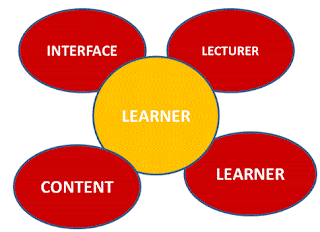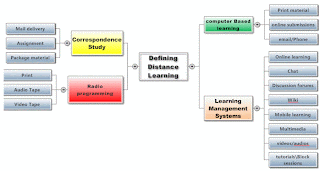Example 3: Asynchronous Training
In an effort to improve its poor safety record, a biodiesel manufacturing plant needs a series of safety training modules. These stand-alone modules must illustrate best practices on how to safely operate the many pieces of heavy machinery on the plant floor. The modules should involve step-by-step processes and the method of delivery needs to be available to all shifts at the plant. As well, the shift supervisors want to be sure the employees are engaged and can demonstrate their learning from the modules.
In an effort to improve its poor safety record, a biodiesel manufacturing plant needs a series of safety training modules. These stand-alone modules must illustrate best practices on how to safely operate the many pieces of heavy machinery on the plant floor. The modules should involve step-by-step processes and the method of delivery needs to be available to all shifts at the plant. As well, the shift supervisors want to be sure the employees are engaged and can demonstrate their learning from the modules.
Fig. 1.
Example
of biodiesel manufacturing plant retrieved from: http://www.omniventures-sarl.com/BIOFUEL-BIODIESEL.html
The employees in the example 3
need to learn skills to use many pieces of heavy machinery and shift
supervisors (as employers or representatives of the employers) are interested
in employees engaging in activities that will demonstrate the knowledge gained.
Simonson et al. (2012) argue that “Much of this is
possible because of the concept of distance education, which involves bringing
learners and the content of instruction together no matter where each is
located” (p.27). For centuries, teachers have solved many problems using
technology tools that match the context of instructional design or pedagogy
(Manning & Johnson, 2011). For example, a mathematics teacher would use
stones or bottle lids as tools to teach learners counting skills. In this case,
we need to explore which technology tools could be selected to teach a series
of safety training modules?
It would be best
to select technology that will serve as a central point to simulate the real
learning environment for distance learning employees (Gunes,
& Altintas, 2013). The LMS Moodle www.moodle.org will be selected as a learning technology where
asynchronous training will occur. Videos would be placed in each module
as a resource, either developed by the instructional designer or using the
existing YouTube videos to effectively engage
learners in the process of learning step- by-step procedures on how to operate
different machines. Videos could be developed using Jing, SnagIt or
Camtasia from http://www.techsmith.com/.
Jing would be the best option as it is available free of charge and can be used
to create short videos limited to the maximum of 3-5 minutes. This is an
example that demonstrates how to use Jing: https://www.youtube.com/watch?v=5FLsSUTFYyw.
Tutorials are often provided to help understand how to use Jing as a technology
tool: http://www.techsmith.com/tutorial-jing-taking-your-first-capture.html. The use of video for training
has the following benefits as stated by King
& Cox (p.69, 2011):
- Available on demand
(24/7). The employees would be able to access the videos at any time
when they are not on shift.
- Able to retrieve an
infinite number of times. Students will have the opportunity to repeat the learning
process, until they have mastered the hands-on skill without being limited
by the number of times they have to watch the video.
- Able to incorporate visual
and audio learning styles. The videos would incorporate images of the machines with
the verbal instruction on how to operate it and text highlighting
important steps in a process.
- Able to serve the needs of
both teacher-centered and self-directed students. The teacher would use
videos to introduce and illustrate a concept to be learned. Students would
be able to access videos at their own time. Where they will have the
independence to pause, replay and stop at any point while learning. Jing is easy and user friendly for the learners to capture their own
videos to demonstrate knowledge learned about each piece of the machine
and share information with their own classmates.
·
Able to develop 21st century skill. Giving a
student a project, such as to develop their own videos on how to operate any of
the machines would integrate the use of technology skills.
Another distance
learning component to be used for an asynchronous training would be discussion
forums in Moodle www.moodle.org, to
encourage communication among students and with the instructor as they explore
the series of modules and wrestle with pertinent questions (Manning &
Johnson, 2011). Discussions would develop employee’s writing and critical
thinking skills as they participate through writing and responding to each
other’s posts (Laureate Education, 2009). The participation in the forum is an
exemplary way of engaging distance learners in a gradual process of learning
through various stages to more complex tasks while using different learning
styles (Fig.
2).
In conclusion, the selection of the distance learning
technologies needs to be driven by each situation that needs training and on
the availability of technologies that can be supported by the organization.
Beldarrain, (2006) posits that “it is the responsibility of instructional
designers, administrators, and technology experts to investigate which tools
offers the best solution for the task of providing interaction in asynchronous
distance learning training” (p.143).
References
Beldarrain, Y. (2006). Distance
education trends: Integrating new technologies to foster student interaction
and collaboration. Distance Education, 27(2), 139–153.
Gunes, A. &
Altintas, T. (2013). Evaluation of Distance Education Components of e-MBA
program – A Case Study. International
Journal on E-Learning, 12 (1), 69-80.
King, K.P. and
Cox, T.D. (2011). Video development and Instructional use: simple and powerful
options. In K.P. King & T.D. Cox (Eds.), The professor’s guide to taming technology: leveraging digital media,
web 2.0, and more for learning (pp.67-88).
Laureate
Education, Inc. (Producer). (2009). The Technology of Distance Education
[Multimedia Program]. Retrieved from https://class.waldenu.edu/webapps/portal/frameset.jsp?tab_tab_group_id=_2_1&url=%2Fwebapps%2Fblackboard%2Fexecute%2Flauncher%3Ftype%3DCourse%26id%3D_3467554_1%26url%3D.
Manning, S. & Johnson, K.E.
(2011). The technology toolbelt for
teaching. San Francisco, John Wiley & Sons, Inc.
Simonson, M., Smaldino, S.,
Albright, M., & Zvacek, S. (2012). Teaching
and learning at a distance: Foundations of distance education (5th Ed.)
Boston, MA: Pearson.






